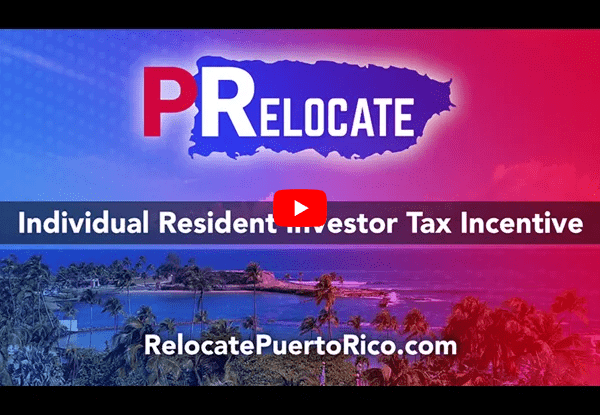How to Pass the Puerto Rico Bona Fide Residency Tests
- Posted: May 15, 2018
- Posted by: Travis Lynk
- Last Reviewed: May 21, 2021

The tax incentives offered by Act 60 have enticed thousands of U.S. citizens to make the move to sunny Puerto Rico, but in order to enjoy these lucrative benefits, Act 60 holders must satisfy three residency tests to prove that they are bona fide residents of Puerto Rico. The three tests are the presence test, the tax home test, and the closer connection test.
To avoid paying regular U.S. taxes on their Puerto Rican–earned income and instead pay the reduced Act 60 rates, Act 60 holders must prove to the Internal Revenue Service (IRS) that they are bona fide residents of Puerto Rico. Before they will exempt you from regular U.S. tax obligations, the IRS must determine that you have truly made Puerto Rico your home. When you have satisfied all the requirements to become a bona fide Puerto Rico resident, you must file Form 8898 to notify the IRS of your new residency status. Form 8898 is used to officially declare the beginning or cessation of bona fide residency in a U.S. possession, determined by the three above-mentioned tests. When filling out the form, you will need to refer to the detailed instructions, which are based on the bona fide residency rules outlined in Publication 570.
It is important to note that bona fide residency is not the same thing as residency, and you are not considered a bona fide resident of Puerto Rico simply by living in Puerto Rico. The core motivation of the IRS in administering the bona fide residency tests is to make sure that you intend to stay in Puerto Rico for an extended period of time and that you spend limited time in the US during your period of bona fide residency.
How to Pass the Presence Test
The first of the three tests is perhaps the most complicated. While it is meant to test your residency in Puerto Rico, the key concern of the IRS is that you are not spending a lot of time in the US. Therefore, there are multiple ways to satisfy the requirements of the presence test. Only one of the following conditions must be true:
- You were present in Puerto Rico for at least 183 days in the tax year.
- You were present in Puerto Rico for at least 549 days in the three-year period of the current tax year and the two previous tax years and were in Puerto Rico for at least 60 days in each tax year during that period.
- You were not present in the US for more than 90 days during the tax year.
- You did not have more than $3,000 in earned income (defined as pay for personal services performed, such as wages, salaries, or professional fees) in the US during the tax year and were present in Puerto Rico for more days than in the US.
- You had no significant connection to the US during the tax year.
To be counted as present in Puerto Rico, you must be physically present on the island during any part of the day. Even if you are in the US or another country for part of the day, if you were physically present in Puerto Rico even briefly, you are counted as being present that day.
The presence test also grants you 30 automatic presence days of international travel (i.e., travel not to the US) per tax year, which means you actually only need to be present in Puerto Rico for 153 days per year as long as you are traveling outside of the US. Note that you may only receive 30 free days of international travel if you fulfill the following conditions:
- You must spend more time in Puerto Rico than the US during the tax year.
- If you are aiming to satisfy the presence test by spending at least 549 days within a three-year period in Puerto Rico, you still must be physically present in Puerto Rico for 60 days per year.
Certain exemptions also apply. For example, if you leave Puerto Rico to receive or accompany a parent, spouse, child, or stepchild to receive a qualifying medical treatment, you are still counted as present in Puerto Rico. If you evacuate or cannot return to Puerto Rico due to disaster, you may also qualify for automatic presence days even though you are physically outside of Puerto Rico.
To keep track of your presence days, download our Day Tracker Tool.
How to Pass the Tax Home Test
The tax home test is the most straightforward of the three. It has only one requirement: do not have a tax home outside of Puerto Rico during any part of the tax year.
Your tax home is considered to be where your primary or regular place of employment or post of duty is, regardless of where you reside. If you do not have a primary or regular place of employment, your tax home is considered to be your primary place of residence.
If you think this test sounds impossible to satisfy for the year of your move, that’s why the IRS offers a special exemption for the year of your move only. We elaborate on that at the end of the post.
How to Pass the Closer Connection Test
The closer connection test is perhaps the most reliable in determining your loyalty to Puerto Rico. Since this test is essentially assessing your intentions, it is somewhat subjective, and since everyone’s situation is different, the IRS considers different factors in each case. The factors that the IRS considers when determining whether you have maintained a closer connection to Puerto Rico than the US during the tax year include the following:
- Where your permanent home is located
- Where your immediate family lives
- Where your personal belongings, such as cars, furniture, clothing, and jewelry, are stored
- Where organizations that you affiliate with, whether professional, cultural, social, religious, or political, are located
- Where your principal bank is located
- Where you conduct business
- The jurisdiction for which you hold a driver’s license
- The jurisdiction in which you are registered to vote
- Where charitable organizations that you contribute to are located
- Which country you put down as your country of residence on official forms
- Which forms or documents you file, such as Form W-8BEN or Form W-9
Essentially, to pass the closer connection test, you need to move your entire life to Puerto Rico, including your family. If you leave your family in the US, it will be quite difficult to pass the closer connection test, unless you satisfy all the other requirements listed. It’s recommended to sell or rent out your home in the US, which will not only significantly help pass the closer connection test but also provide some extra cash.
How you choose to pass the closer connections test depends on your individual circumstances, but you should aim to build up a life in Puerto Rico to the best of your ability. Giving up your connection to organizations in the US is also not mandatory, but it is recommended to make connections with Puerto Rico organizations to establish ties in the local community. Opening a Puerto Rican bank account is helpful not only for the test but also for your daily life on the island, as is a local driver’s license.
How to Pass the Tax Home and Closer Connection Tests in the Year of Your Move
You are considered to have satisfied the tax home and closer connection tests in the year of your move if you satisfy the following three conditions:
- You were not a bona fide resident of Puerto Rico in any of the three tax years immediately preceding the tax year of the move.
- You did not maintain a tax home outside of Puerto Rico for the last 183 days of the year.
- You are a bona fide resident of Puerto Rico for the year of your move plus the two proceeding years.
To make the most of the Act 60 tax incentives, we recommend that you move before July 1 in the given year. That way, you can satisfy all the tests and achieve bona fide residency even in the year of your move.
Summary
Passing Puerto Rico’s bona fide residency tests may seem tough, but if you truly move your whole life to Puerto Rico, it’s not that difficult. If you have decided to make the move and take advantage of Puerto Rico’s generous tax incentives, make sure you’re really committed. Puerto Rico is a sunny Caribbean paradise, and you can enjoy an enriched life in a beautiful culture with beautiful weather, but if you’re pining for your life in the US because you left significant connections there, you may not enjoy it. Commit to Puerto Rico, and passing the residency tests will be fairly easy.
For detailed information directly from the IRS about the residency tests, consult Publication 570.
Disclaimer: Neither PRelocate, LLC, nor any of its affiliates (together “PRelocate”) are law firms, and this is not legal advice. You should use common sense and rely on your own legal counsel for a formal legal opinion on Puerto Rico’s tax incentives, maintaining bona fide residence in Puerto Rico, and any other issues related to taxes or residency in Puerto Rico. PRelocate does not assume any responsibility for the contents of, or the consequences of using, any version of any real estate or other document templates or any spreadsheets found on our website (together, the “Materials”). Before using any Materials, you should consult with legal counsel licensed to practice in the relevant jurisdiction.
More Articles
-
Why You Should Purchase a Pre-Owned Property in Puerto Rico

Read MoreMarch 31, 2022 -
Virtual Mailbox in Puerto Rico – Easy Setup, Low Fees

Read MoreDecember 8, 2022



